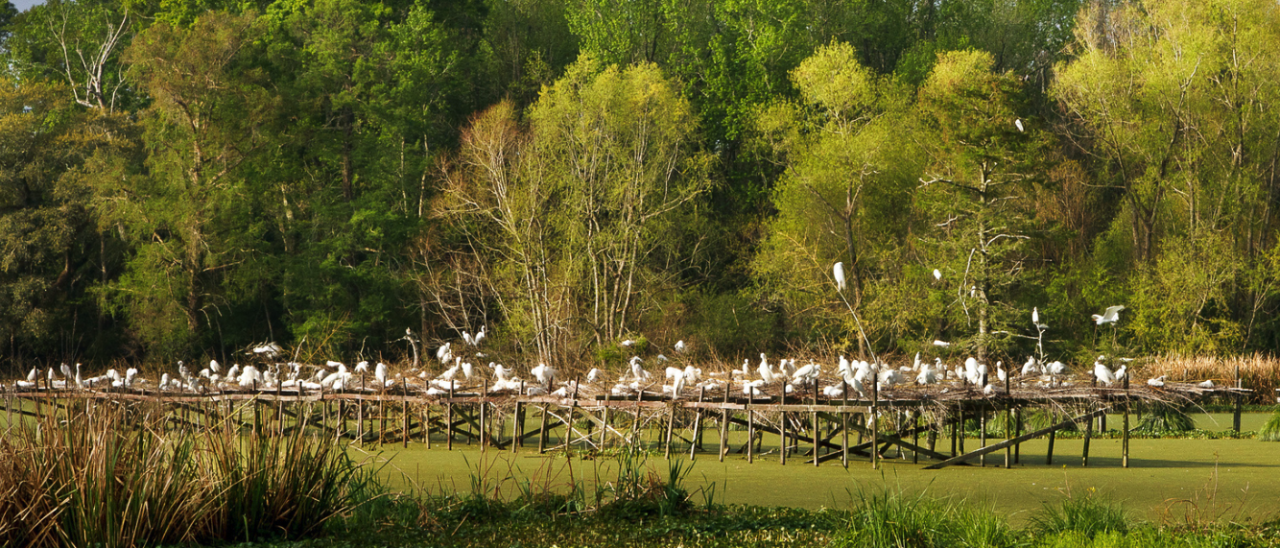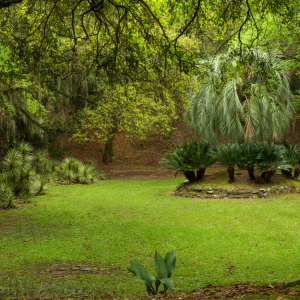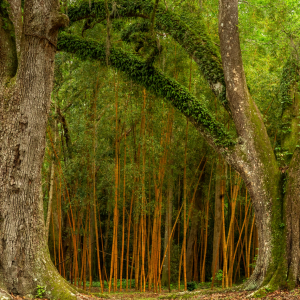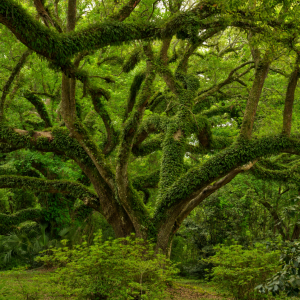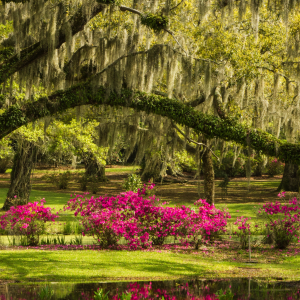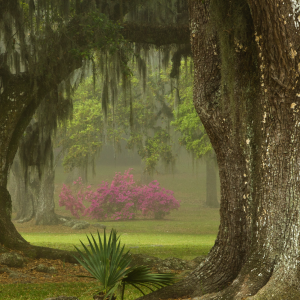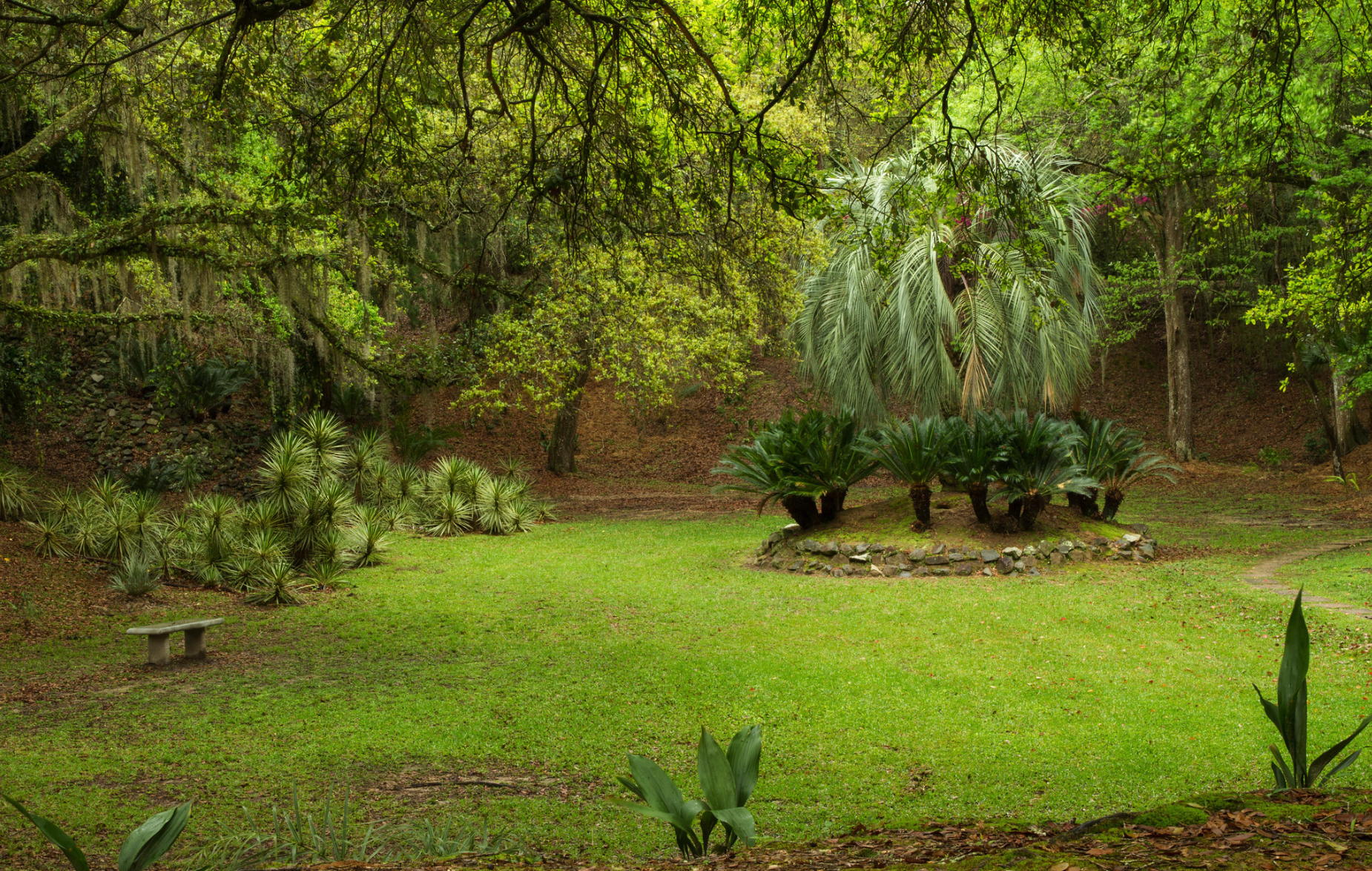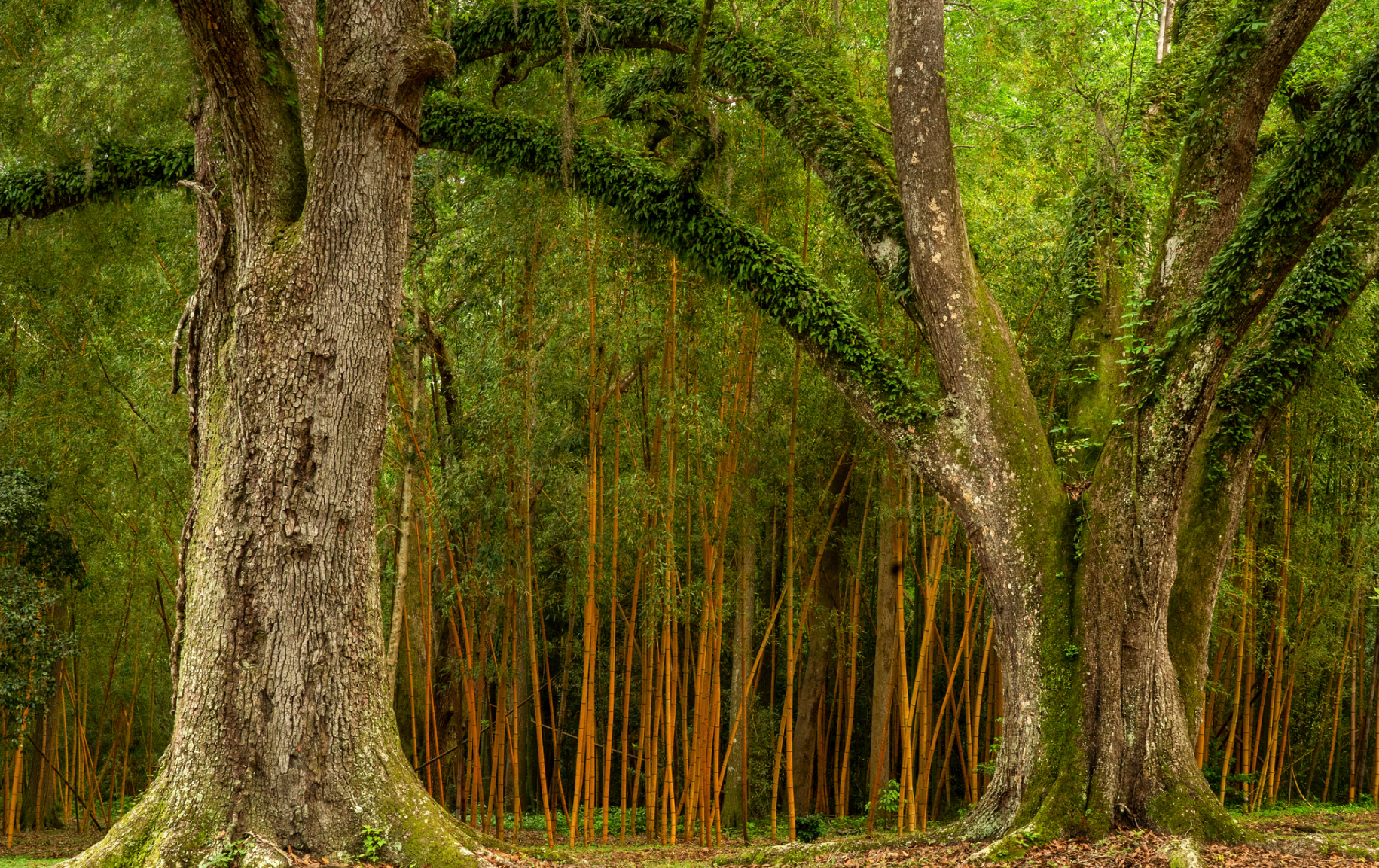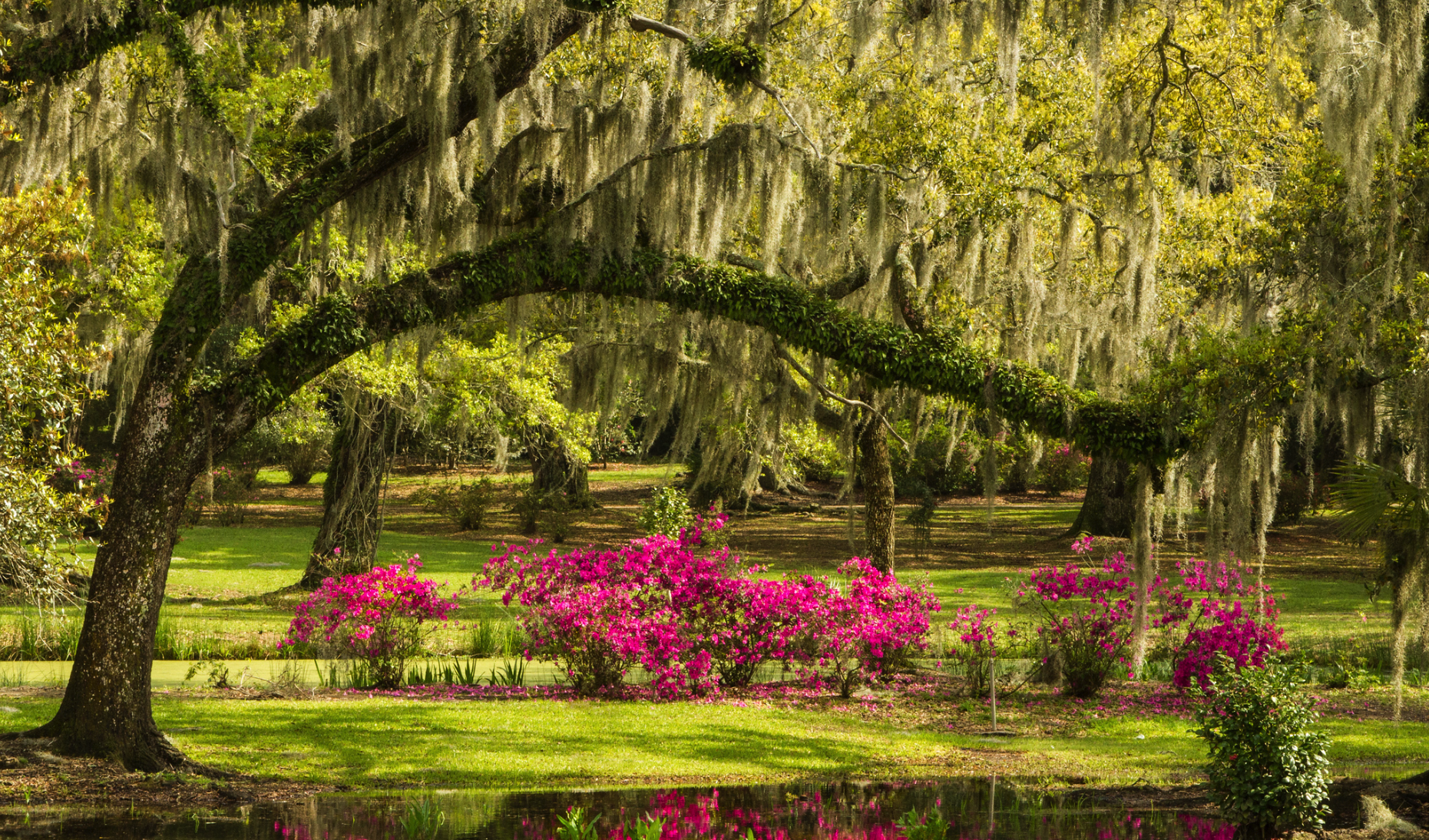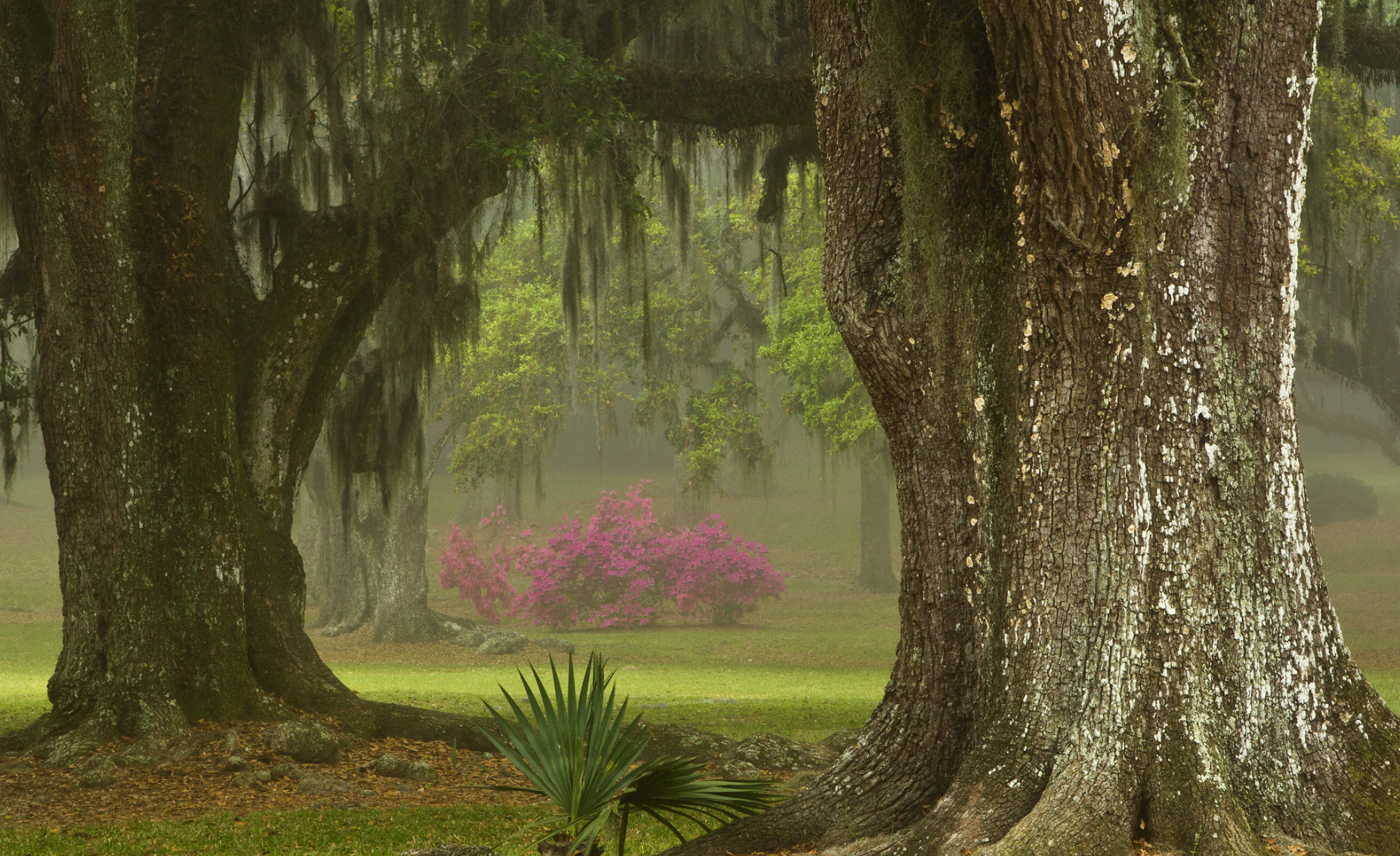Jungle Gardens and Herbarium on Avery Island
Jungle Gardens is a 175-acre drive-through tropical and semi-tropical garden located on the northwest side of Avery Island in Louisiana. It has roughly 13 miles of roads that traverse the landscape.
Originally the property served as Edward Avery “Ned” McIlhenny’s private estate, at the center of which stood his residence, Mayward Hill. In the early 1920s, however, Ned opened a plant nursery and landscape architecture business on this property. He called this business Jungle Gardens Inc.
In 1935 he responded to the rise of automobile tourism during the Depression by opening his gardens to the public, even as he continued to operate the place as a wholesale nursery/landscaping business with satellite locations in New Orleans and Houston.
In 1936 two New Yorker friends of Ned spotted a centuries-old Buddha statue for auction in Manhattan. They purchased and shipped the statue to Ned by railcar as a surprise gift. On arrival Ned immediately decided where to put it in the Gardens: he constructed a rock mound topped by a small modern temple, and in that temple, he displayed the Buddha. Around the mound he constructed seven low hills encircling a bridged reflecting pool and covered the entire area in flowering camellias and azaleas as well as many varieties of bamboo. At the entrance to this Buddha garden, he erected a red torii gate. All these flourishes remain on display, with the Buddha and temple serving as the de facto centerpiece of Jungle Gardens.
Another important landmark in Jungle Gardens, however, is Bird City, a private wildfowl rookery that Ned established in 1895 to preserve the dwindling snowy egret population (nearly wiped out by plume hunters). The father of the American conservation movement, Theodore Roosevelt, called this rookery “the most noteworthy reserve in the country” (probably because it was established by a private individual using his own initiative and funding). It was in this rookery in 1913 that Ned and Pathé Frères newsreel company made the 8-minute silent film The Snowy Egret and Its Extermination — which still exists in the Avery Island Archives and is believed by some to be the earliest known conservation film. Ned showed this film around the country, including on Capitol Hill in Washington, D.C., to influence politicians and the public to support wildfowl protection laws.
Other notable features of Jungle Gardens include the Ward Boathouse (built ca. 1915 for the yacht of Ned’s friend and fellow conservationist Charles Willis Ward), the Cleveland Oak (named to commemorate U.S. President Grover Cleveland’s January 1892 visit to the Island), as well as numerous smaller gardens within the overall Jungle Gardens, such as the Sunken Garden, the Camellia Study Garden, the Palm Garden, the Venetian Garden and the “old” Nursery. Throughout the gardens are many varieties of bamboo. McIlhenny’s passion for bamboos led to Jungle Gardens recognition of having the largest bamboo collection in the US during the 1900s.
Jungle Gardens ceased to operate as a commercial nursery around 1952. Many venerable camellia plants, however — having been left to grow wild for over seven decades — remain untouched in their original nursery plots. Today these areas are covered by mature southern hardwood forests with an understory formed by those camellias. During the winter flowering season, a woodland trail leads through countless rows of towering camellias in bloom.
Avery Island Archives also has a working herbarium of specimens documenting all species of plants found growing in Jungle Garden and on Avery Island.
In addition to camellias, Jungle Gardens retains the atmosphere of an antique garden harboring many exotic plants long lost to cultivation. Dr. Richard Olsen, director of the National Arboretum, visited Jungle Gardens in 2017 and stated that Jungle Gardens looked like a garden he might have expected to see a century ago.
Photos of Jungle Gardens and Bird City by P. McIlhenny

